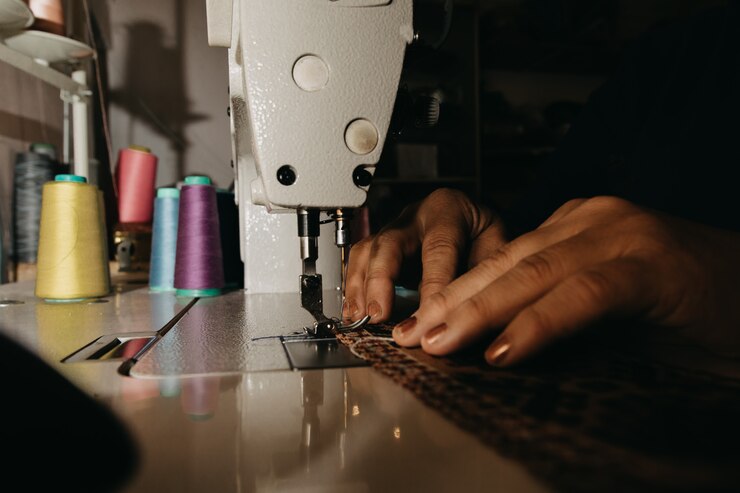Vector and Digitizing: A Perfect Blend for Creative Excellence
In the dynamic world of design and customization, the terms “vector” and “digitizing” have become buzzwords. Both have revolutionized how industries approach branding, personalization, and product development. This blog explores their significance, how they complement each other, and why they are essential in 2025.
Understanding Vector Art
Vector art is the foundation of modern digital graphics. Unlike raster images, which are composed of pixels, vector art uses mathematical equations to create shapes, lines, and colors. This unique feature allows vector graphics to be resized infinitely without losing quality. Whether designing a logo, an advertisement, or apparel, vector art ensures precision and clarity.
For instance, companies often rely on vector art to create scalable logos that look sharp on everything from business cards to billboards. This scalability is crucial for consistent branding across multiple platforms and mediums. In short, vector art is indispensable for any project requiring high-quality, adaptable graphics.
What Is Digitizing?
Digitizing converts artwork, images, or designs into a format that embroidery machines or other automated systems can read. In the context of embroidery digitizing involves mapping out stitch paths, thread colors, and layering techniques to recreate a design in thread. This process is more than a technical conversion; it is an art form requiring skill, precision, and creativity.
Industries like fashion, promotional products, and sports rely heavily on digitizing to bring intricate designs to life. For instance, a detailed logo or a complex graphic on a sports jersey requires meticulous digitizing to maintain its visual appeal. The success of such projects often depends on professional digitizing services that can accurately translate the original design into stitches.
How Vector Art and Digitizing Work Together
Vector art plays a pivotal role in digitizing. Since vector files are resolution-independent and offer clean, sharp lines, they are ideal for creating embroidery-ready designs. Starting with a vector file eliminates many common issues that arise from using raster images, such as pixelation and distortion.
When you use vector art for digitizing, the transition from digital design to stitched product becomes seamless. For example, a business looking to embroider its logo on uniforms will benefit from starting with a vector file. The clean lines and precise details of the vector design ensure that the final embroidered logo appears professional and consistent.
The Importance of Digitizing Services
In today’s competitive landscape, professional digitizing services are essential. These services bridge the gap between creative concepts and tangible products, ensuring that designs are executed flawlessly. Digitizing services cater to various industries, including fashion, advertising, and corporate branding.
In the United States, the demand for high-quality digitizing services has surged. Digitizing USA leads the way in offering cutting-edge solutions for embroidery, screen printing, and more. Companies like NKEMB excel in providing these services, blending advanced technology with skilled craftsmanship to meet diverse client needs.
Trends Shaping Vector and Digitizing Technologies
As we navigate 2025, advancements in vector and digitizing technologies are reshaping the industry. AI and machine learning are now integral to the process, enhancing efficiency and accuracy. Automated tools can analyze complex designs, suggesting optimal stitch paths and color combinations. These innovations save time and reduce errors, allowing professionals to focus on creativity.
Additionally, software updates have introduced features like real-time simulation and predictive editing. These tools enable designers to preview how a digitized design will look on the final product, reducing trial-and-error efforts. In the realm of vector art, new design tools have made creating intricate graphics faster and more accessible.
Choosing the Right Partner for Your Needs
Selecting the right service provider is crucial for achieving top-notch results in vector art and digitizing. Look for companies that offer a blend of technical expertise and artistic sensibility. NKEMB stands out as a trusted name in this domain, offering unparalleled digitizing services and vector art solutions tailored to your specific needs.
When evaluating providers, consider their portfolio, customer reviews, and technological capabilities. A reliable partner will guide you through the process, ensuring that your designs translate seamlessly from concept to reality.
The Future of Vector and Digitizing
The future holds exciting possibilities for vector and digitizing technologies. As AI continues to evolve, we can expect even more sophisticated tools that simplify complex tasks. Imagine software that can automatically detect potential issues in a design and offer instant corrections. Such advancements will make these services more accessible and efficient.
Moreover, the push for sustainability is influencing how vector and digitizing services operate. Eco-friendly practices, such as using recycled materials and energy-efficient machines, are becoming standard. This shift aligns with the growing demand for sustainable solutions in the design and manufacturing sectors.
Conclusion
Vector art and digitizing are integral to modern design and customization. Their synergy ensures that creative visions are realized with precision and quality. Whether you’re a business owner, a designer, or a manufacturer, investing in professional services like those offered by NKEMB can elevate your projects to new heights.
As we move forward, the collaboration between vector art and digitizing will continue to drive innovation, setting new standards for excellence in design and production. Embrace these technologies to stay ahead in an ever-evolving industry.

